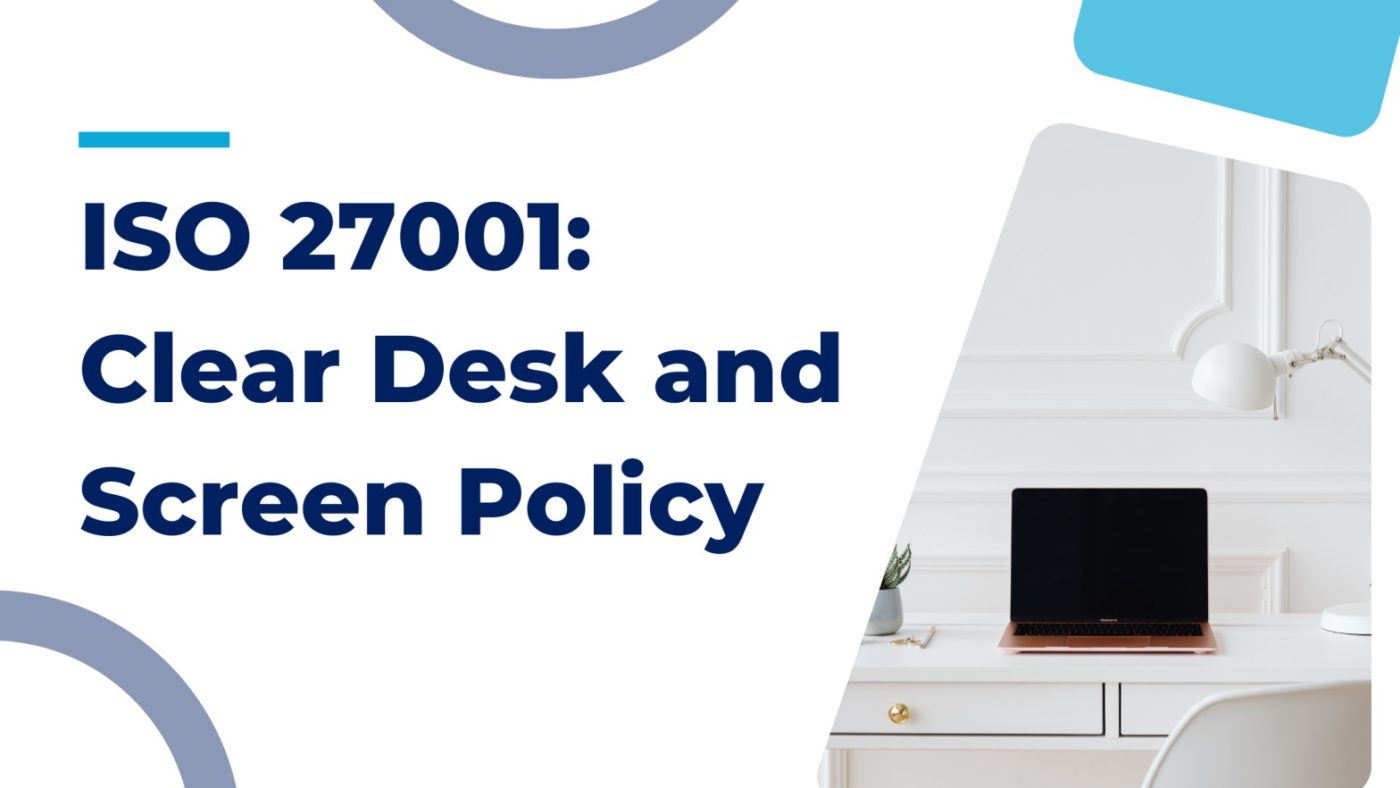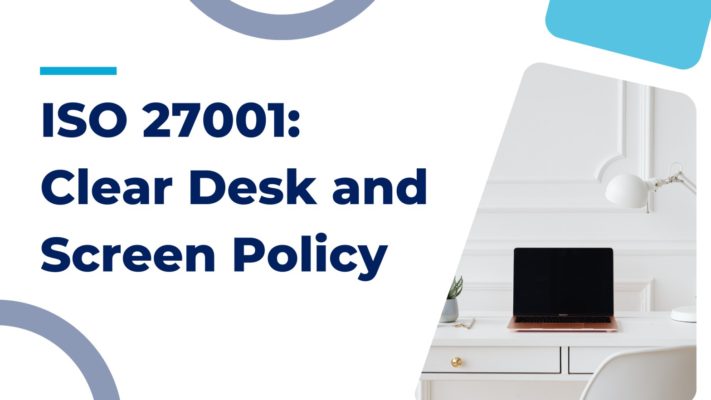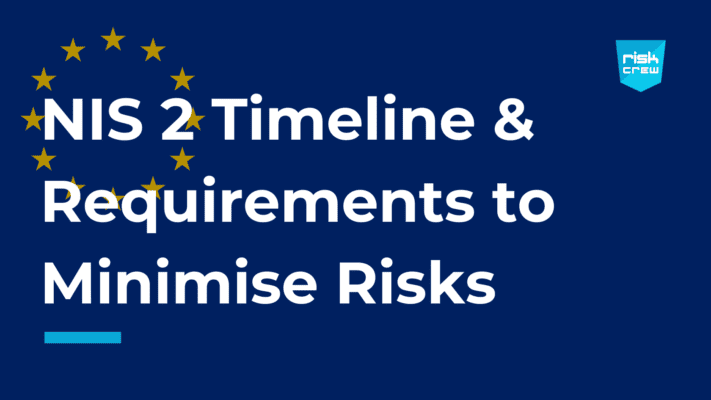You know that feeling when you walk into an office, and it looks like a hurricane just blew through? Papers litter the area, sticky notes cling to computer monitors like colourful barnacles, and chaos fills the air.
The implications of these might seem obvious but they pose greater problems — Information and Cyber Security Risks.
Having information readily accessible to threat actors e.g., paper documents not in lockable storage, puts an individual and the organisation at risk of data exfiltration and a breach. This is where a Clear Desk Policy becomes important.
What Is a Clear Desk Policy
A Clear Desk Policy (CDP) within the framework of ISO 27001, often referred to as a “Clear Desk and Clear Screen Policy,” comprises precise guidelines and procedures crafted to align with the stringent information security stipulations set forth by ISO 27001.
The primary goal of a clear desk policy is to enhance information security, protect sensitive data, and reduce the risk of data breaches or unauthorised access.
ISO’s guidance goes beyond just having a tidy desk, however. The standard suggests protecting user endpoints via lock and key when not in use. This includes ensuring computers are configured with an automatic logout feature to lock when unattended, confidential documents are always collected from the printers and placed in a safe place out of sight, and clearing sensitive information from whiteboards immediately after use.
Vacating your office for good? Make sure you do a clean sweep and ensure there are no information assets fallen behind drawers or furniture for prying eyes to see.
Why Is a Clear Desk Policy Required for ISO 27001 Compliance?
Well, there are some compelling reasons for implementing a CDP. First and foremost, it helps protect sensitive data and reduce the risk of a data breach. Think about all those confidential documents, login credentials, and company secrets that could be lying around.
Additionally, senior management regularly enforcing the need for a tidy workspace can do wonders for productivity among employees. Let’s take a deeper look into its impact contributions to compliance with ISO 27001.
- Improve Security Awareness and Culture: ISO 27001 places importance on creating a security-conscious culture within an organisation. Implementing a CDP helps raise awareness among employees about the importance of security. It reinforces the idea that everyone has a role to play in safeguarding sensitive information.
- Compliance with ISO 27001 Annex A: Annex A of ISO 27001 outlines a comprehensive set of controls that organisations can adopt to address various aspects of information security. Control A.11.2.9 specifically pertains to the “clear desk and clear screen policy,” making it a mandatory control for ISO 27001 compliance. Adhering to this control involves implementing a Clear Desk Policy.
- Audit and Certification Requirements: ISO 27001 compliance involves regular audits and assessments to ensure that security controls are effectively implemented and maintained. A CDP is part of this auditing process and is important evidence for an auditor to check an organisation’s compliance with ISO 27001 requirements.
Challenges of CDP
While Clear Desk Policies come with a host of benefits, they are not without their set of challenges:
- Resistance to Change: Some employees might push back against the policy, seeing it as an encroachment on their workspace and ensuring consistent adherence to the policy can be a challenge, particularly without effective oversight.
- Personalisation Dilemma: Striking the right balance between a clean and organised workspace and allowing employees to personalise their workstations can be a delicate task.
- Remote Document Management: Managing physical documents and maintaining a clear desk remotely can be challenging, as employees may not have access to secure physical storage solutions typically available in the office.
Implementing a Comprehensive Clean Desk Policy for Remote and In-Office Work Environments
So, you’re convinced that a Clear Desk And Screen Policy is a good idea for your organisation. But how do you go about implementing one? It’s not as complicated as it might seem. Here are some steps to get you started:
- Define Clear Guidelines: Start by creating a set of clear and easy-to-understand guidelines. These should outline what is expected of employees in terms of desk cleanliness and organisation.
- Communicate the Policy: Once you have your guidelines in place, make sure everyone in the organisation is aware of them. Hold meetings or training sessions to explain the policy and its importance.
- Provide Tools and Resources: Give employees the tools they need to keep their desks clean and endpoints secure when unattended. This might include filing cabinets, shredders, and recycling bins.
- Electronic Documentation: In a bid to reduce paper vulnerabilities and encourage efficient information management, you should promote the use of electronic documentation wherever feasible.
- Monitor and Enforce: Regularly check in on employees’ workspaces to ensure compliance with the policy. They should consistently lock the computer and log out of the office account when not in use. Enforce the policy consistently and fairly.
- Reward Compliance: Consider implementing a rewards system to incentivise employees to maintain clear desks. Positive reinforcement can go a long way in promoting compliance.
Conclusion
Clear Desk Policy (CDP) serves as a multifaceted asset for any organisation. It goes beyond just tidying up workspaces; it acts as a bulwark against data breaches, safeguarding sensitive information and ensuring its protection. The ripple effects of a CDP are equally significant, fostering increased productivity, improving office aesthetics, and enhancing overall organisation.
By adhering to such a policy, companies not only streamline their internal operations but also project a positive image of professionalism and meticulous attention to detail. So, consider implementing a CDP in your workplace – it’s a small step that can yield big benefits in the long run.
Don’t teach your users to follow policies. Teach them to understand the “why”.














